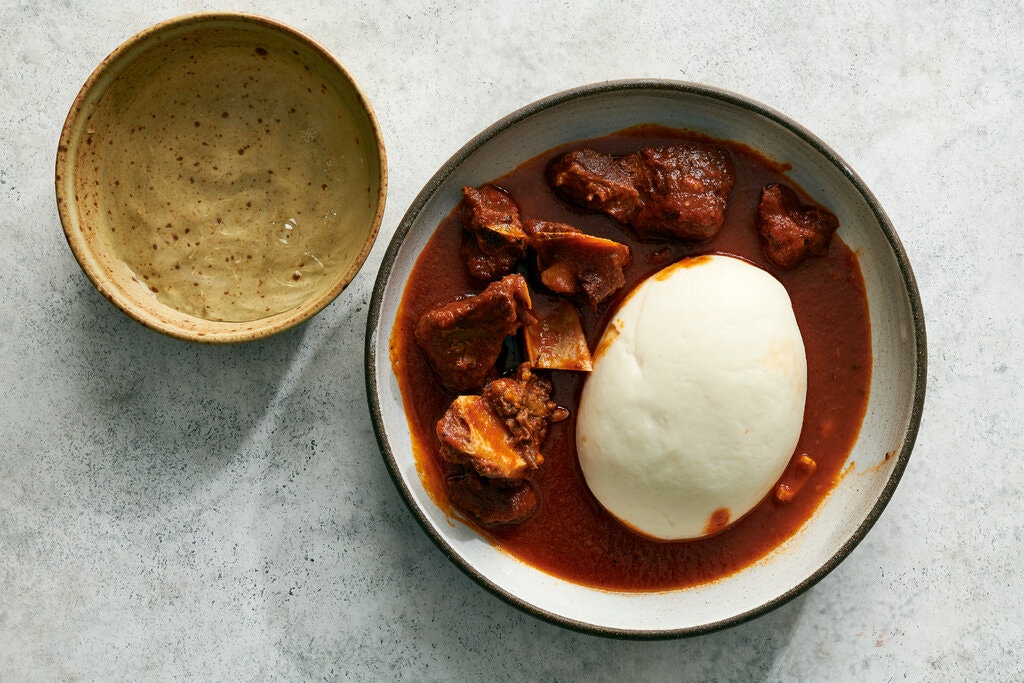Swallows like fufu are a simple yet ingenious staple that pull the best of nourishing, everyday vegetable soups and stews into every bite.
There is an art to eating swallows: the proper thumb-and-finger pinch to pull off a bite, the almost imperceptible roll of the dough from the palm to the tips of the fingers as it’s lowered into soup to scoop a mouthful. But I am perennially out of practice.
I am highly self-conscious about my swallow-rolling technique, one that I’ve barely improved since my childhood in Lagos. While savoring them effortlessly requires years of practice, shoddy technique does not lessen my appreciation for swallows’ subtle, earthy sweetness.
In the same way a spoon carries distinct flavors from the edge of a bowl into its center, or a crust of bread absorbs the essence of the broth in its path, swallows are a means of pulling the best of a dish into each bite.
Swallows, as they’re called in English, are a broad category of cooked starchy vegetables and grains that are pounded or kneaded until soft and elastic. In regional African and Afro-Caribbean cuisines, they go by a variety of names and are prepared using a range of ingredients; there’s northern Nigerian tuwo shinkafa made with rice, East African ugali made from corn, southwest Haitian tonmtonm made from breadfruit.
But perhaps the term most often heard in America is fufu. All swallows are not fufu, and fufu itself ranges in preparation. In Nigeria, fufu is made from crushed and fermented cassava, sold at markets as a paste to dissolve in hot water. Ghanaians may refer to a combination of pounded cassava and additional starches, such as green plantains, as fufu. In the diaspora, fufu is most commonly made not by pounding but by cooking finely milled flours of starchy roots or tubers in hot water on the stovetop. Like most staples, adaptations exist for convenience.
Image
What all swallows share is that they should be served hot, portioned right into a bowl primed for vegetable soup and stewed meat, or plastic-wrapped and kept warm for when the meal begins. An accompanying washbowl for rinsing off fingers before and after the meal should always be within reach.
Despite the subtle differences among swallows in West Africa and beyond, eating this dish leads the way to the very heart of a culinary experience. Swallows alone are not the means to understanding global cuisine, but they begin a conversation, a way to peel back the layers like an endless onion.
